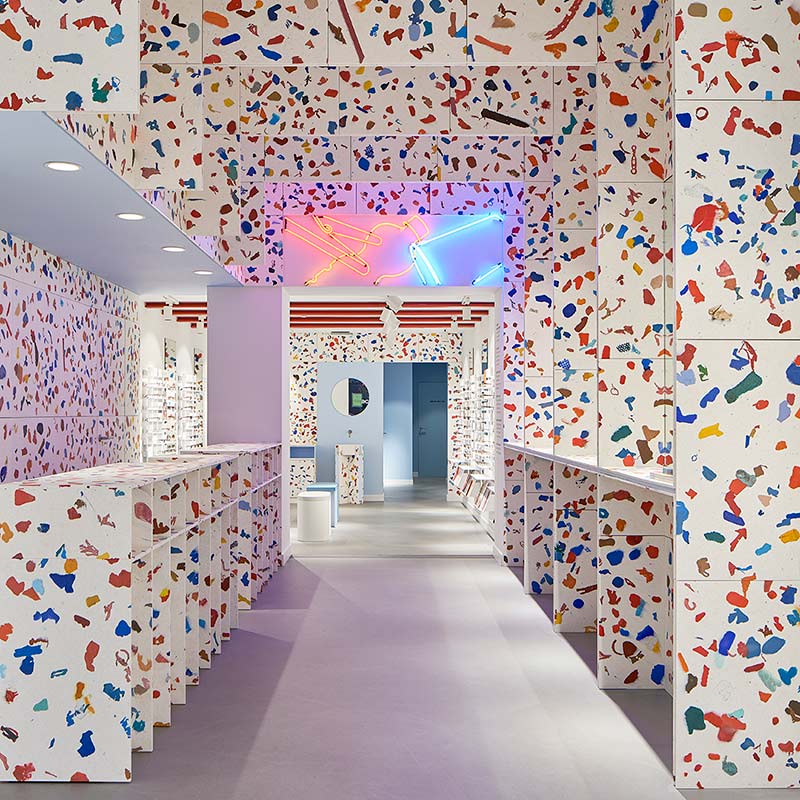
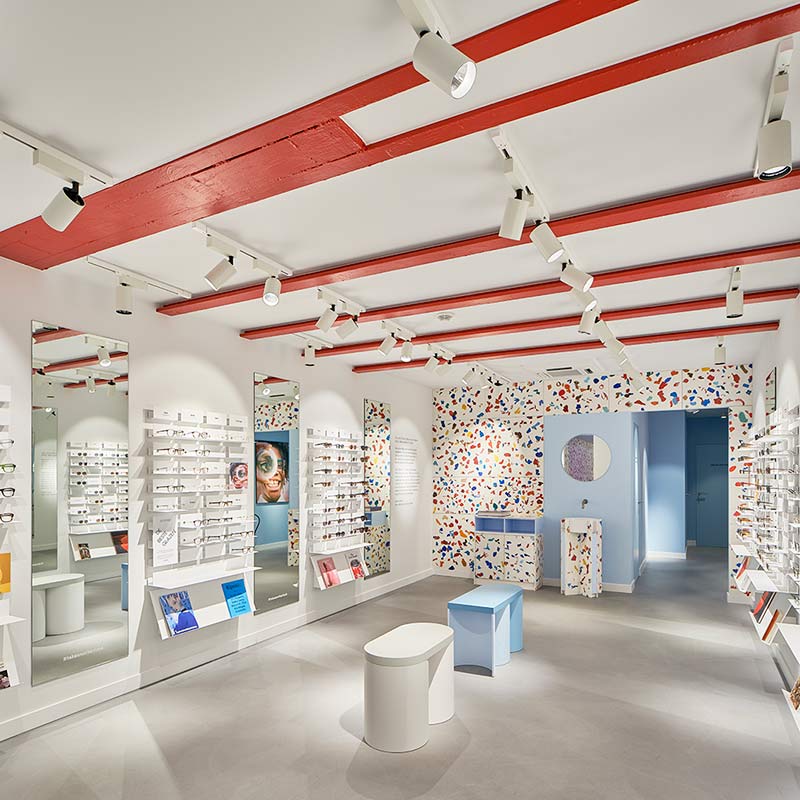
Ace & Tate stores are both sleek and playful. This was a great source of inspiration for Plasticiet when it came to designing the Antwerp store. Besides the design, the story behind the store played a significant role. For this reason, Plasticiet decided to incorporate local waste into the material, not only so that it would be recognizable for the people of Antwerp, but also to align with Ace & Tate’s ambition to grow to become an eco-friendly company.
Li-Li de Goede, then a member of the Ace & Tate store design team, first came across Plasticiet materials at the Design District trade fair in Leuven (Belgium) in 2018. She was very enthusiastic about the style and mood of the Plasticiet exhibition stand. When the time came to redesign the Antwerp store, there was no question as to which material would be used. The store would offer a unique retail experience and tell a story, in which sustainability would play a central role to align with Ace & Tate’s ambition to grow to become an eco-friendly company.
Materiaal is een onuitputtelijke bron van kleur, licht, vorm en toepassing. Ontdek de mogelijkheden.

By transforming plastic waste into designer plastic panels and installing them in the store, sustainable plastic is given a long-term home and can in future be recycled time and again. Plasticiet is eager to inspire others to seek sustainable solutions for materials that can be reused or recycled, instead of abusing the world’s valuable resources by simply tossing them away.
Specifically for this branch of Ace & Tate, Plasticiet adapted its Rhinestone design by incorporating colours used frequently in the visual expression of its stores. Rhinestone is made out of polystyrene, one of the most widely used materials with myriad uses in industrial and construction equipment, as well as household products such as food packaging, kitchen utensils and toys.
Unlike the universally known white plastic – which used to be food packaging – the plastic recovered from Antwerp’s waste becomes less liquid, allowing the pieces to retain their shape during the melting process. All of the coloured chips visible in the store design came from bulky household waste collected and taken to an Antwerp waste processing facility. The polystyrene was shredded into large pieces that were hand-sorted into red, blue and orange before being heated.
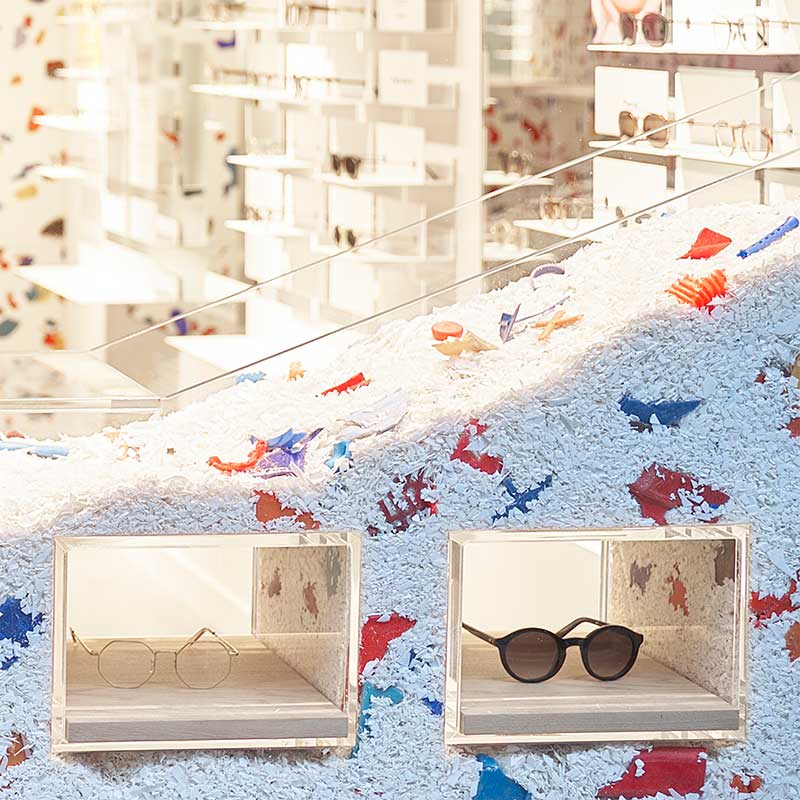

To emphasize the repetition of the coloured flakes, customers are first guided through a space where only spectacle lenses can be seen, after which they are led through plastic archways. Here, the pattern and repetition combined with the mirrors enables the customer to surrender completely to the recycled world. The space then opens out into more serene surroundings where they can take their time to look for a pair of glasses that suit them.
With Ace & Tate’s wishes in mind, a space was created that combines calmness and tranquillity with vibrant colours. As the flecked panels are so prominent, the choice was made to keep the design repetitive and calm. In addition, a lot of mirrors were used to create a sense of space and magnify the repetition in the design. Because the pieces of waste retain their shape during melting, visitors can have fun finding familiar products in the panels, or they can use their imagination to visualize recognizable shapes.
Materiaal is een onuitputtelijke bron van kleur, licht, vorm en toepassing. Ontdek de mogelijkheden.
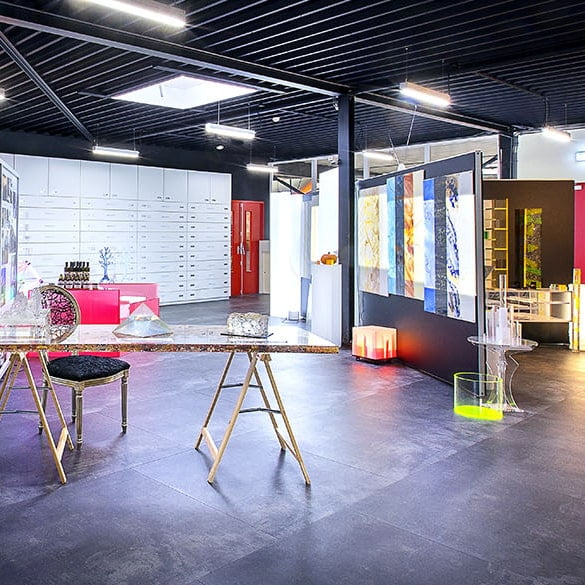
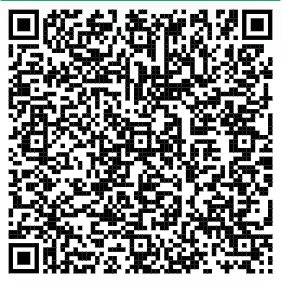
Bewaar mijn gegevens
Office
Aldebaranweg 3
8938 BD Leeuwarden
Experience room (by appointment only)
Apolloweg 26
8938 AT Leeuwarden
+31 (0)58-7676100
contact@pyrasied.com
KvK 01043736
BTW BTW NL8139.40.709 B01
And stay up to date with the latest material developments and applications.


